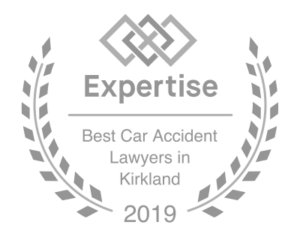 In many personal injury cases the insurance company for defendant pays a defense medical doctor to do a CR 35 forensic exam of plaintiff. When the forensic defense doctor testifies he predictably states the injuries should have healed in a few weeks, there are little or no objective symptoms, plaintiff has reached maximum medical improvement, and there are no residual injuries. This post discusses how I deal with the defense medical expert.
In many personal injury cases the insurance company for defendant pays a defense medical doctor to do a CR 35 forensic exam of plaintiff. When the forensic defense doctor testifies he predictably states the injuries should have healed in a few weeks, there are little or no objective symptoms, plaintiff has reached maximum medical improvement, and there are no residual injuries. This post discusses how I deal with the defense medical expert.
Take Doctor’s Deposition. The CR 35 requires I receive the defense exam report. Although I use the report for cross examination, I go beyond the report. To effectively prepare for cross examination I take the defense doctor’s deposition. At the deposition I cover the following:
You as a Treating Physician. I ask questions that go to doctor’s practice as a treating physician. When were you a treating doctor? Where were you a treating doctor. Have you treated patients who were traumatically injured? Surgery and non surgery? Did you ever see a traumatically injured patient for more then 10 medical visits? More then 20? How long was a typical visit? Do you use SOAP notes? Agree symptoms may wax and wane. How much validity do you give to your patient’s subjective presentation? Did you ever treat a [patient with similar injury as client] who never fully recovered from their injury? Discuss. How do you determine if your patient has a permanent injury?
Factors Influencing Injury. Let’s discuss factors that influence injury. Agree gender is a factor (studies show women more likely injured then men). Agree age is a factor (older the more difficult traumatic injury). Pre-existing condition (injury more likely to degenerative discs/joints). Significance of impact (harder the more likely injury). Applied to rear end collision. Design of target vehicle: Rigidity of bumper (more rigid more likely injury). Tow Bar (more likely injury). Size of Bullet Vehicle (larger=more mass=more injury). On the body. Awareness of impact (unaware =no bracing=more injury). Out of position body (head/body turned=more injury). Head away from head rest (= more neck injury).
Medical Terms/Articles. What is a strain? (tearing of muscle and new scar tissue is not the same). What is a sprain? (over stretching of tendons and ligaments that do not get back to original tightness). Does a sprain/strain involve both conditions? Copy medical articles/abstracts that support your client’s injury presentation. Introduce to doctor at the deposition. Discuss. Mark as exhibits.
Staying Current. What medical publications do you subscribe to to stay current? What internet sites do you regularly read? Name CME seminars you have attended in last 24 months. When was last time you published in peer reviewed journal. Citation.
IMEs Generally. Percentage of cases for defendants v plaintiffs. Protocol for IME discussed. (Number in a day, week, year). Amount charged per hour (Hourly for IME, for deposition, for trial). Have you ever found an injured plaintiff to be permanently injured? Discus. Agree you get subjective presentation. (Same as when treating and subjective presentation allows for understanding of condition from injured person/patient). See person only once. Exam lasts 10/15 minutes. Not there to help patient recover.
IME Specifics. Cover favorable portions of IME. Have doctor read favorable portions into record. Especially impact facts, subjective presentation, range of motion limitations, and objective findings. Have doctor discuss candor of client. Honest, straightforward fully cooperative. Don’t bother with opinions and conclusions that hurt as deposition is the time to set the table for cross examination at trial.
Post Footer automatically generated by Add Post Footer Plugin for wordpress.


 Once we have agreed to settle with the negligent party’s insurance company we address the settlement proceeds. Here we deal with potential
Once we have agreed to settle with the negligent party’s insurance company we address the settlement proceeds. Here we deal with potential 

 The next posts under the topic “How I Practice Law” discuss the settlement of a personal injury case.
The next posts under the topic “How I Practice Law” discuss the settlement of a personal injury case. Some thoughts on the ups and downs of being a personal injury trial lawyer. First the ups:
Some thoughts on the ups and downs of being a personal injury trial lawyer. First the ups: